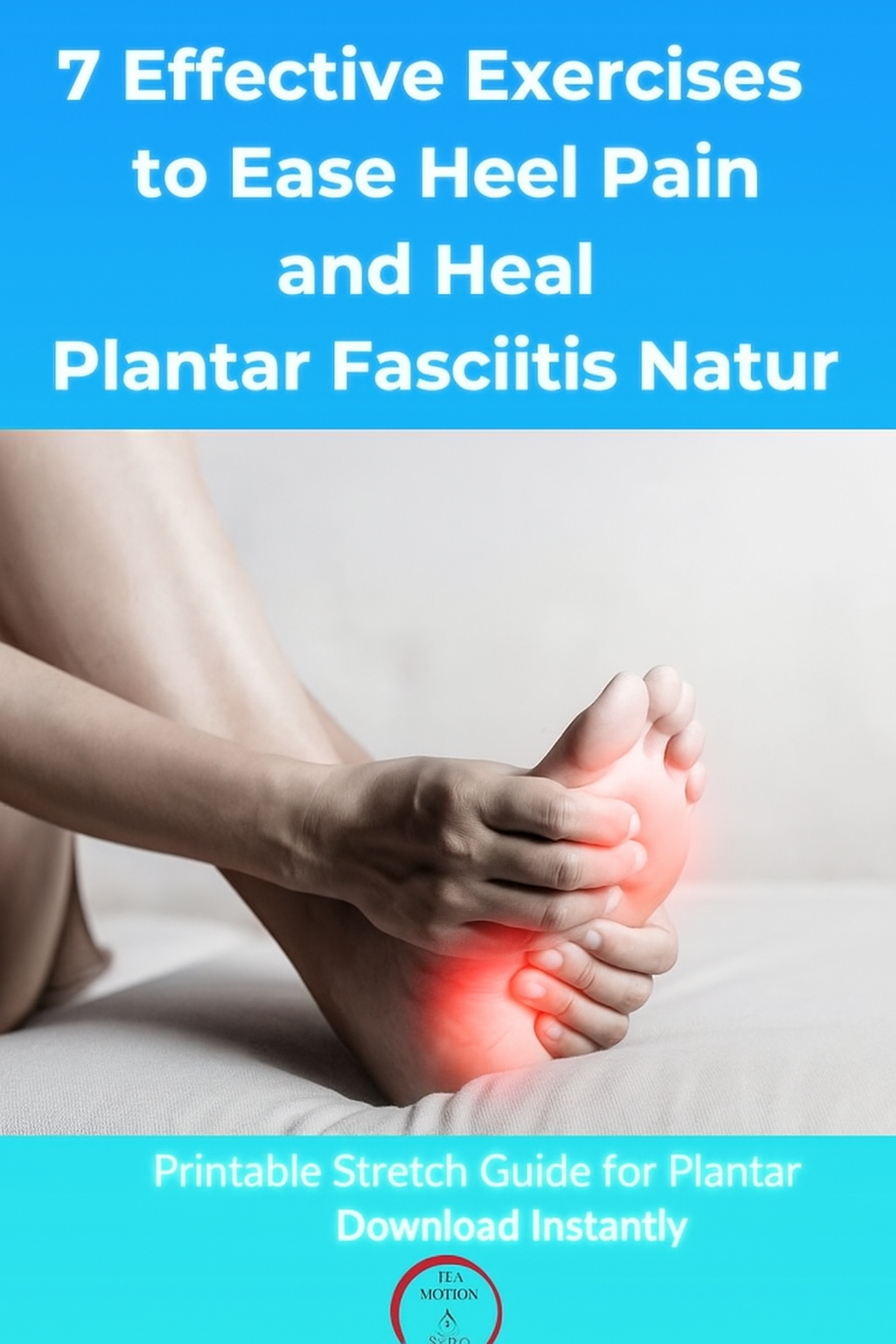If you wake up with sharp heel pain that makes those first few steps feel unbearable, you might be experiencing plantar fasciitis — a common cause of heel discomfort.
This condition occurs when the plantar fascia, the thick band of tissue that connects your heel to your toes, becomes inflamed due to overuse, muscle tightness, or strain.
The plantar fascia supports your foot’s arch, and when irritated, it causes stabbing pain, most noticeable in the morning or after long periods of sitting. People who run, stand for hours, or wear unsupportive shoes are at a higher risk.
Without proper care, plantar fasciitis can become chronic, making daily movement painful. The best way to prevent long-term issues is to start early treatment with targeted exercises.
7 Exercises to Relieve Heel Pain
1. Towel Stretch
A gentle stretch to improve flexibility in your calf muscles and plantar fascia.
- Sit with your legs straight and loop a towel around the ball of your foot.
- Gently pull the towel toward you until you feel a stretch.
- Hold for 15–30 seconds and repeat 2–3 times.
2. Calf Stretch
Releases tight calves that put strain on the plantar fascia.
- Stand facing a wall and step one leg back, keeping your heel on the ground.
- Bend the front knee while keeping the back leg straight.
- Hold 15–30 seconds per side, repeat 2–3 times.
3. Plantar Fascia Stretch
Targets the inflamed tissue directly.
- Sit down and cross one foot over the opposite knee.
- Gently pull your toes toward you until you feel a stretch in the arch.
- Hold 15–30 seconds and repeat 2–3 times.
4. Ball Roll (Massage)
Helps relieve tension and reduce inflammation.
- Place a tennis ball, golf ball, or frozen water bottle under your arch.
- Roll slowly for 1–2 minutes.
- Do this several times a day, especially after standing or walking.
5. Toe Taps
Strengthens the small muscles that support your arch.
- Keep your heels on the floor and lift your toes toward your shins.
- Hold briefly, then relax.
- Repeat 10–15 reps for 2–3 sets.
6. Foot Flex and Point
Builds strength and flexibility in your ankles and feet.
- Sit with legs extended.
- Flex your toes toward your shins for 5 seconds, then point them forward for 5 seconds.
- Repeat 10–15 times per foot.
7. Ankle Circles
Improves ankle mobility and promotes even pressure distribution.
- Extend one leg and rotate your ankle 10 times clockwise, then 10 times counterclockwise.
- Switch to the other foot.
When to See a Professional
If your pain doesn’t improve after a few weeks of consistent stretching, consult a doctor or physical therapist. They may recommend:
- Custom orthotics
- Night splints
- Physical therapy sessions
- Advanced treatments like shockwave therapy or injections
Prevention Tips
- Wear supportive shoes with good cushioning.
- Avoid walking barefoot on hard surfaces.
- Stretch your calves and feet before and after exercise.
- Replace worn-out shoes regularly.
- Maintain a healthy weight to reduce pressure on your feet.
Final Thoughts
Plantar fasciitis can be frustrating, but with patience and consistency, recovery is absolutely possible. Incorporating daily stretching, strengthening, and supportive footwear can ease pain and help prevent future flare-ups. Healing takes time—so stay dedicated, and each small effort will bring you closer to lasting comfort and mobility.

